2014 Mazda3 Review – Video

Since it went on sale in 2003 the Mazda3 has become a vital product for the Japanese automaker. In fact over the last decade they’ve delivered more than 3.5 million of these compact cars. It accounts for 30 percent of the brand’s sales around the world, which means nearly one out of three Mazdas sold is a 3.
FAST FACTS
| 1. The 2014 Mazda3’s base engine is a 2.0-liter 4-cylinder that puts out 155 horsepower and 150 lb-ft of torque. |
| 2. The car’s optional powerplant is a 2.5-liter engine. It delivers 184 hp and 185 lb-ft. |
| 3. An entry-level Mazda3 sedan stickers for less than $18,000, including shipping and handling fees, while five-door models start at a little less than 20 grand. |
| 4. Four-door 2.0L models with the automatic transmission return up to 41 MPG on the highway. |
But now the company is in a bit of a tough spot. How do you improve a wildly successful product without alienating existing customers or driving away other potential buyers? The answer is carefully, very carefully. The devil really is in the details.
SKYACTIV TO THE BONE
Fuel economy is the No. 1 driving force behind many automotive trends these days. The need for ever-greater efficiency is pushing car companies to explore things like advanced drivetrain technologies, cutting-edge materials and even new fuels. But delivering mega miles per gallon is not enough, it has to be attainable by normal drivers; that is the true challenge this industry faces.
Rather than relying on a single magic -bullet solution to maximize economy Mazda is taking a holistic approach with its Skyactiv technology suite.
To deliver the goods every component gets scrutinized and optimized to reduce weight or improve efficiency. This ranges from the vehicle’s very foundation, the unibody architecture, to engines, transmissions and beyond. For U.S.-market cars the weight savings are in the neighborhood of 100 pounds, which is huge for a vehicle that’s structurally stiffer and rides on a longer wheelbase.
This attention to detail has really paid off; the 2014 Mazda3 delivers some pretty impressive fuel-economy numbers. The most efficient version of the car is a four-door sedan with the base 2.0-liter engine and an automatic transmission. These models are estimated to deliver 30 miles per gallon in city driving and up to 41 on the highway!
Get the Flash Player to see this player.
SKYACTIV PROPULSION
That standard powerplant is far from “entry level.” It produces 155 horsepower with 150 lb-ft of torque. Those numbers are very close to what today’s Skyactiv-powered Mazda3 delivers but engineers have significantly fattened up the midrange output so it’s more pleasant in everyday driving.
But just because it delivers more torque doesn’t mean the engine can’t rev. It’s smooth running and isn’t afraid to spin at high RPM, especially when paired with the manual gearbox.
The 2014 Mazda3’s optional powerplant is again a 2.5-liter four-banger. Like its smaller sibling it too has been reinvigorated. Horsepower clocks in at 184 while torque one ups the ponies, literally. The engine delivers 185 lb-ft of twist.
Two transmissions are available, both of which have six forward speeds. A responsive automatic will undoubtedly serve as the go-to gearbox for North American customers, but a snappy-feeling manual is available for folks in the know. At launch the stick shift will not be available with the larger engine, though it will become available at a later date.
SKYACTIV RESULTS
As mentioned, the entry-level car delivers up to 41 miles per gallon highway, which is impressive for a vehicle with such engaging performance. And fortunately for drivers, other versions of the new Mazda3 are nearly as miserly.
Five-door models with a manual gearbox and the 2.0-liter engine are rated by the U.S. EPA at 29 miles per gallon city and 40 on the interstate, making for a combined score of 33 MPG. With the Skyactiv-Drive automatic transmission the car’s city score goes up by 1, though the combined rating remains the same.
Sedan versions with the 2.0-liter powerplant and the manual sticker at 29 city, 41 highway.
Things get more complicated for cars equipped with the larger 2.5-liter engine. Sedans ought to deliver 28 miles per gallon around town and 39 on the highway, or 29 city and 40 interstate when equipped with Mazda’s i-ELOOP system (more on that in a moment).
Five-door models with the 2.5-liter engine should return 28 and 37, though those figures increase to 29 and 39 when the car is equipped with i-ELOOP.
i-E-WHAT?
Everyone knows hybrids save fuel. Wedding a conventional internal-combustion engine to an electric motor and battery pack allows a vehicle to recuperate energy through regenerative braking. Typically they can also run exclusively on electric power at low speeds. These advantages, among others, help cut consumption and bolster the window sticker’s large-font numbers.
Rather than developing a full-blown hybrid drivetrain, which would be costly, complex and bulky, Mazda took a different approach. Their strangely named i-ELOOP system, which stands for “intelligent energy loop” offers some of the benefits of hybrid technology with none of the abovementioned liabilities.
The heart of this system is an electrical capacitor. It functions like a battery, storing power recuperated from the vehicle’s kinetic energy. It generates this electricity whenever the car is moving and the accelerator pedal is released.
Unlike in hybrids, those stored electrons are used to power the vehicle’s various electrical systems, things like the headlamps, climate control and audio system. Running on this stored energy reduces the need for the engine to burn extra fuel to generate electricity. This is some pretty shrewd engineering and it results in impressive real-world benefits. Fuel efficiency is boosted by an estimated 5 percent.
BEAUTY IS A BEAST
Technical achievements aside, the first thing anyone notices about a car is its styling, and the 2014 Mazda3 is dressed in a striking body that looks more premium than should be allowed in the compact class. It wears the brand’s KODO design theme, which is Japanese for “soul of motion,” or so we’ve been told.
The most noticeable aspect of its styling is the way the car’s visual weight has been shifted back; designers call it “cab-rearward” styling. The new Mazda3 has a long hood and almost rear-wheel-drive proportions. It’s a very attractive small car and one that looks far more expensive than probably anything else in the C-Segment.
INTERIOR AMBIANCE
The car’s interior has also been significantly redesigned. At first glance it looks rather plain, but spend a few minutes appraising the cabin and you’ll come away impressed.
The materials are very upscale, the assembly quality is unbeatable and the overall design is understated and elegant. This is a compact car that’s really grown up, as it should be. Mazda’s designers have not been benchmarking the competition; they’ve been much more ambitious than that.
Vehicles from companies like BMW and Audi have been their focus and it shows. There’s very little to complain about inside the 2014 Mazda3, with two exceptions.
The car’s navigation screen looks like a total afterthought, almost like they ran out of space and couldn’t properly integrate it into the dashboard so they just stuck the display on top of the center stack and called it a day. The whole arrangement looks like an iPad Mini propped up above the air vents.
Additionally, some of the instruments are not up to the lofty standards set by the rest of the cockpit. Depending on the model the tachometer, temperature gauge and fuel indicator are rendered in cheesy looking digital displays that look like they belong on a Nintendo Game Boy, not a brand-new car.
Beyond these minor complaints the new Mazda3 is available with a raft of premium features not typically available in the compact class. This lineup of advanced driver-assistance systems are bundled together under the name “i-Activsense.” Some of the technology offered includes automatic high beams, blind-spot monitoring, radar-based cruise control and low-speed brake support, real luxury-car features at an affordable price point.
ZOOM-ZOOM OR HO HUM?
Mazda hangs its hat on building vehicles that are not just efficient, safe and functional but also entertaining to drive… after all they are the Zoom-Zoom brand.
Despite its increased fuel efficiency and added features the 2014 Mazda3 is every bit as engaging as previous versions of the car.
For starters the ride is a bit firm, but not overly harsh. This allows you to chuck it into a corner like a sack of trash into a garbage can, all with total confidence.
The vehicle’s electrically boosted steering may sound like a weak link but it’s as charming as some of the best hydraulic setups out there. It’s nicely weighted with a chunky feel; you know exactly what the front tires are doing at all times.
No matter the engine, they’re both extremely responsive. The base 2.0-liter unit is smooth and likes to rev. It’s particularly enjoyable with the manual transmission. Acceleration is perfectly adequate in just about every situation.
Of course the optional 2.5-liter engine provides a nice power boost, though it’s not quite as brisk as you might think. Still, its extra serving of torque is appreciated.
DOLLARS AND “SENSE”
An entry-level four-door model stickers for a little less than $18,000, coming in at $17,740 including $795 is shipping and handling fees.
The five-door kicks off at a skosh less than 20 grand at $19,740, again including destination and delivery charges. These prices are pretty competitive with other C-Segment offerings.
The 2014 Mazda3 goes on sale in September, as in this month. Cars should be arriving at dealerships right now.
THE VERDICT
Simply put the 2014 Mazda3 is the C-Segment’s leader. It delivers a riotous driving experience, striking design and a premium cabin all with quality and efficiency that’s the envy of lesser small cars. With a laundry list of virtues like this why the hell would you ever buy a Civic or a Corolla? Ladies and gentlemen, this is the new face of best in class.
LOVE IT
- Sports sedan driving dynamics
- Premium interior
- Exterior design
- Fuel economy
LEAVE IT
- After thought navigation screen
- Cheesy gauges

Born and raised in metro Detroit, Craig was steeped in mechanics from childhood. He feels as much at home with a wrench or welding gun in his hand as he does behind the wheel or in front of a camera. Putting his Bachelor's Degree in Journalism to good use, he's always pumping out videos, reviews, and features for AutoGuide.com. When the workday is over, he can be found out driving his fully restored 1936 Ford V8 sedan. Craig has covered the automotive industry full time for more than 10 years and is a member of the Automotive Press Association (APA) and Midwest Automotive Media Association (MAMA).
More by Craig Cole
















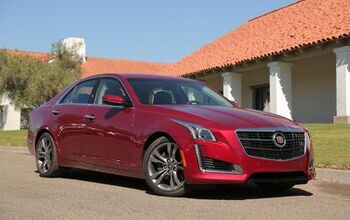
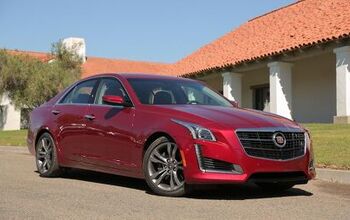
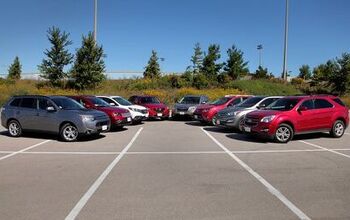
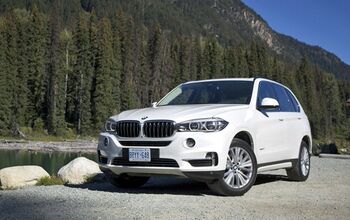


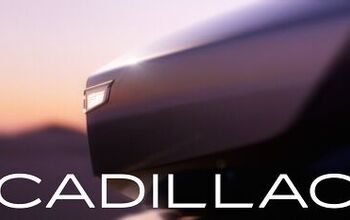

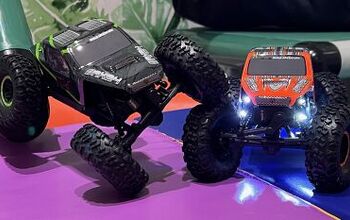


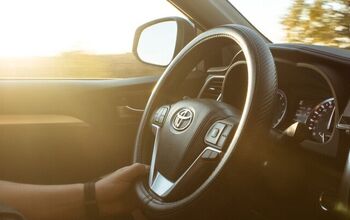


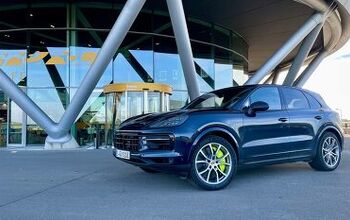
Comments
Join the conversation